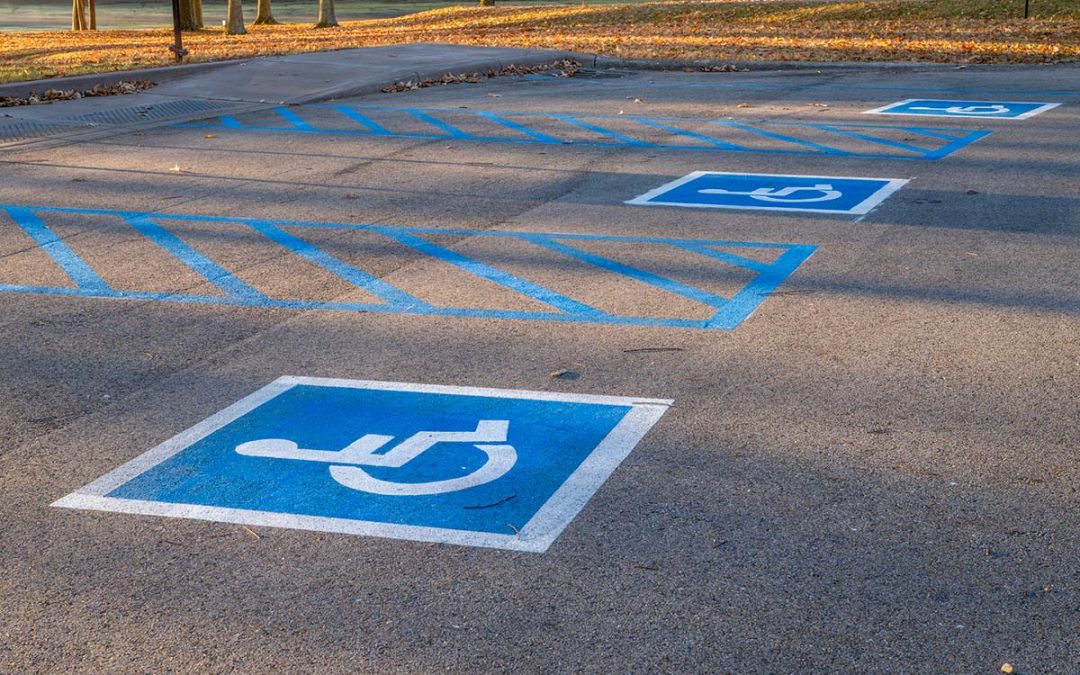The Importance of Accessible Parking
Accessible parking is a crucial aspect of creating an inclusive and accommodating environment for individuals with disabilities. The Americans with Disabilities Act (ADA) mandates specific guidelines to ensure that parking lots cater to the needs of disabled drivers and passengers. This article examines the key requirements set by the ADA, explores the significance of accessible parking, and highlights cities that have excelled in providing well-designed accessible parking lots.
The Americans with Disabilities Act (ADA) and Accessible Parking
The ADA, enacted in 1990, prohibits discrimination against individuals with disabilities and aims to ensure their equal access to various facilities, including parking lots. ADA guidelines stipulate the number, location, and design of accessible parking spaces to make them convenient and safe for disabled individuals.
Number of Accessible Spaces
The ADA outlines specific requirements for the number of accessible parking spaces based on the total number of parking spaces in a lot. Typically, accessible parking should be provided at a ratio of one accessible space for every 25 parking spaces, with at least one van-accessible space for every six accessible spaces [ADA Guidelines].
Location of Accessible Spaces
ADA regulations dictate that accessible parking spaces must be located on the shortest accessible route to the entrance of the facility. These spaces should be positioned near the entrance, minimizing the distance individuals with disabilities need to travel. Additionally, van-accessible spaces must have an adjacent access aisle to accommodate wheelchair lifts [Access Board].
Design and Marking
Accessible parking spaces must adhere to specific design and marking criteria. This includes a minimum width to accommodate wheelchair users, appropriate signage, and a painted access aisle to ensure a clear path for individuals with mobility aids [Access Board].
Accessible Routes
Beyond the parking spaces themselves, ADA compliance extends to the accessible routes from parking areas to the facility’s entrance. Sidewalks and curb ramps must be in place to facilitate safe and convenient access for disabled individuals [ADA Guidelines].
Additional Features
Some parking lots go above and beyond ADA requirements by offering additional features such as accessible drop-off zones, ramps, and convenient access to amenities. These extra elements contribute to a more holistic approach to accessibility.
Significance of Accessible Parking
Accessible parking goes beyond mere compliance with regulations; it plays a vital role in promoting inclusivity and independence for disabled individuals. Here are some key reasons why accessible parking is so crucial:
Equal Access
Accessible parking ensures that individuals with disabilities have equal access to public facilities, services, and amenities. It promotes inclusivity by reducing barriers that may otherwise limit participation in various activities.
Independence and Mobility
Well-designed accessible parking allows disabled individuals to maintain their independence and mobility. It enables them to navigate public spaces more easily, contributing to an improved quality of life.
Safety
ADA-compliant accessible parking spaces are designed with safety in mind. By providing designated areas close to entrances, the risk of accidents or fatigue-related issues for disabled individuals is significantly reduced.
Community Integration
Accessible parking fosters community integration by encouraging the participation of disabled individuals in social, cultural, and recreational activities. This promotes a more diverse and inclusive community.
Cities with Exceptional Accessible Parking
Several cities across the United States have taken proactive measures to ensure that their parking facilities go beyond ADA compliance. Here are some examples:
Portland, Oregon
Portland has made significant strides in promoting accessible transportation, including parking facilities. The city’s commitment to sustainability extends to its parking infrastructure, with a focus on eco-friendly design that also considers the needs of disabled individuals. Beyond the parking spaces themselves, Portland’s parking facilities often include accessible drop-off zones, making it easier for disabled individuals to access entrances without facing additional barriers.
San Francisco, California
San Francisco is renowned for its dedication to accessibility and inclusive urban planning. The city has implemented innovative solutions to enhance accessible parking, ensuring that disabled drivers and passengers have convenient and safe options. The city has also integrated smart parking technologies and applications to help drivers, including those with disabilities, locate available parking spaces efficiently.
Austin, Texas
Austin has emerged as a leader in providing accessible parking options. The city’s commitment to creating a more inclusive environment is reflected in its well-designed parking facilities that prioritize the needs of individuals with disabilities. Austin’s parking lots are equipped with well-marked and designated accessible parking spaces, featuring clear signage, appropriate dimensions, and distinguishable markings on the ground to ensure that these spaces are easily identifiable and usable by individuals with disabilities.
Boston, Massachusetts
Boston has embraced accessibility in its urban development, including parking facilities. The city’s focus on creating barrier-free spaces contributes to a positive experience for disabled drivers and passengers. Boston has also implemented educational programs to raise awareness about accessible parking and disability rights, helping educate the public about the importance of respecting accessible parking spaces and understanding the needs of individuals with disabilities.
Conclusion: The Path Forward for Accessible Parking
Accessible parking is a fundamental aspect of creating a society that values inclusivity and equal access for all. By adhering to the guidelines set by the Americans with Disabilities Act (ADA) and going beyond mere compliance, cities can create parking facilities that truly cater to the needs of disabled drivers and passengers.
The examples provided highlight cities that have excelled in this regard, showcasing the positive impact of well-designed accessible parking on the lives of individuals with disabilities. As we continue to prioritize accessibility, it is essential for communities in the United States to learn from these examples and work towards creating parking facilities that enhance mobility, independence, and overall quality of life for all citizens.
